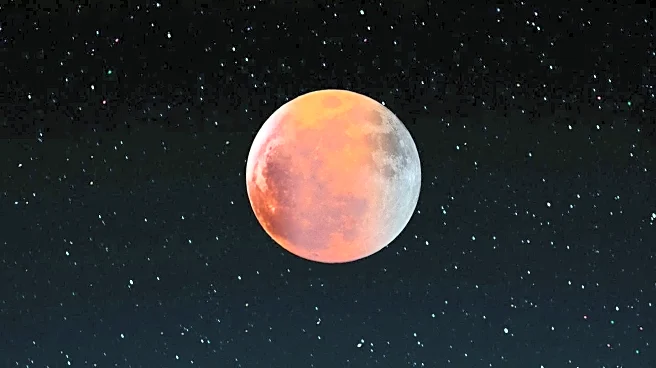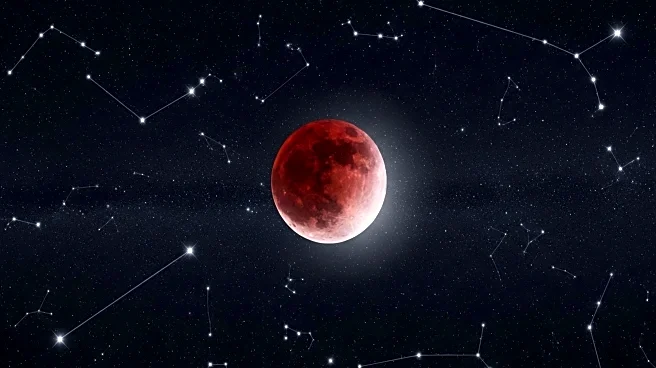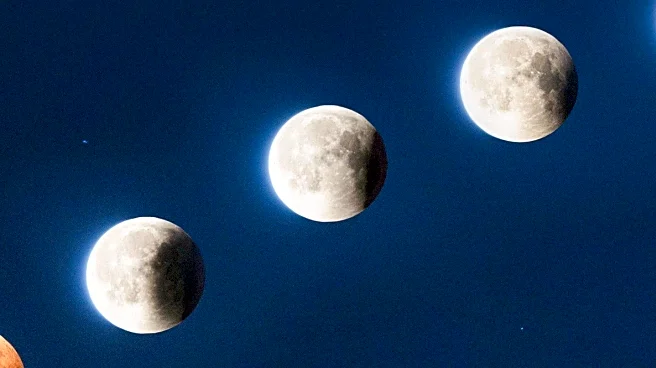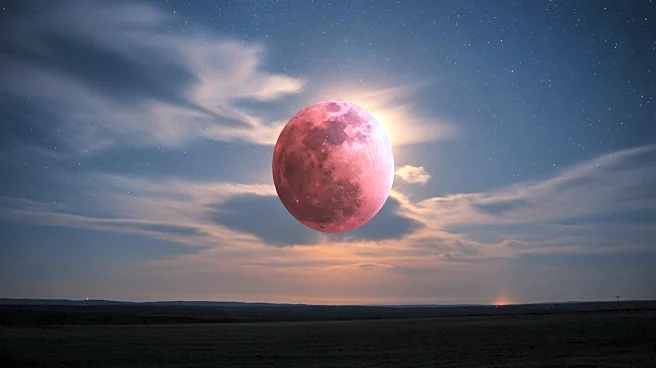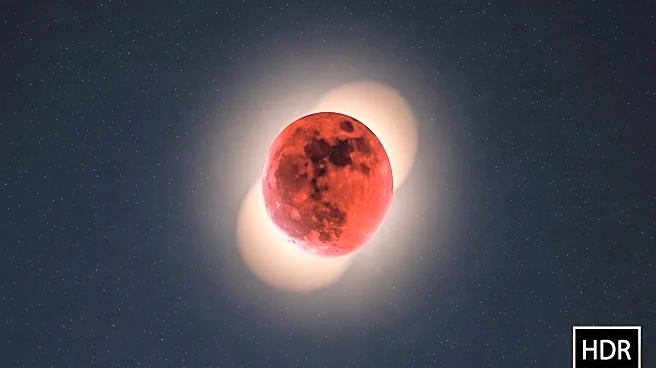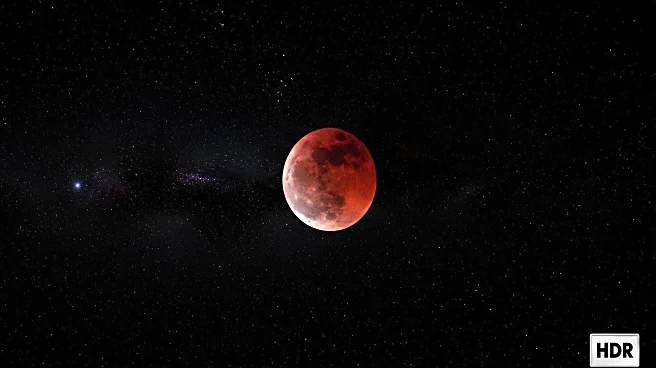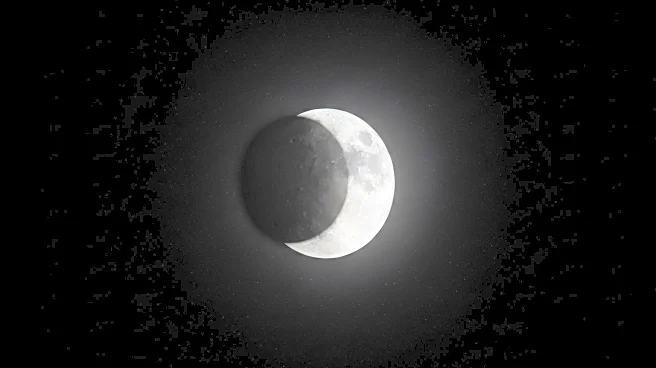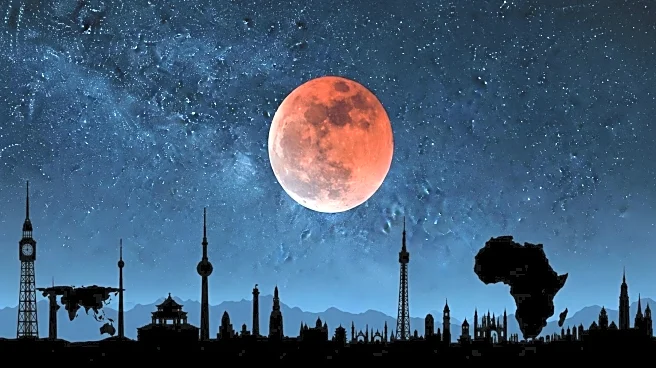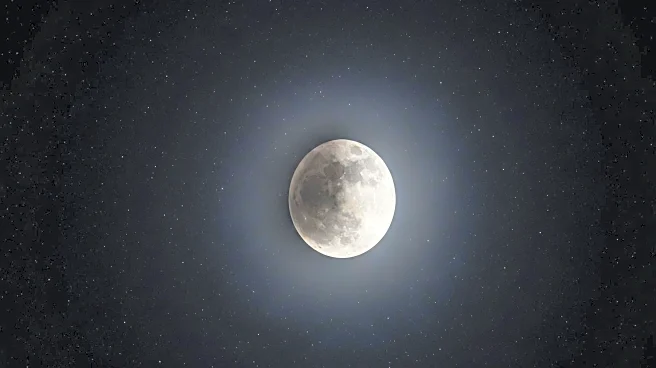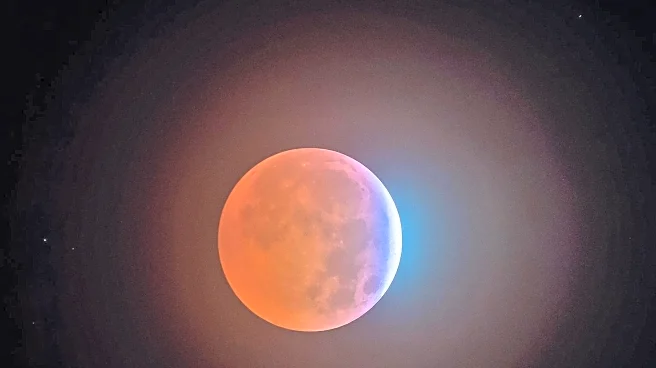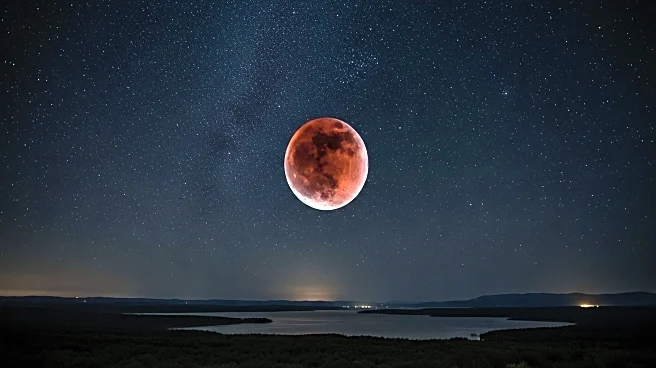What's Happening?
September offers several celestial events for stargazers, including a full lunar eclipse resulting in a blood moon, visible primarily in Asia and Australia. The Corn Moon, occurring on September 7, coincides with this eclipse, creating a unique viewing experience. Additionally, Venus and Jupiter will appear close together in the sky on September 16, accompanied by a crescent moon. The autumnal equinox on September 22 marks the start of fall in the Northern Hemisphere, providing more opportunities for stargazing as nights grow longer.
Why It's Important?
These astronomical events provide opportunities for scientific observation and public engagement with astronomy. The blood moon and planetary alignments offer unique viewing experiences that can inspire interest in celestial phenomena. The autumnal equinox signifies seasonal changes, impacting various aspects of life, including agriculture and cultural traditions. Stargazing events like these can foster community activities and educational programs, promoting awareness and appreciation of the natural world.
What's Next?
Stargazers are encouraged to find locations with minimal light pollution to fully enjoy these events. Observatories and planetariums may host special viewing sessions and educational programs to enhance public understanding of these phenomena. As the nights grow longer, more stargazing opportunities will arise, potentially leading to increased interest in astronomy and related sciences.
